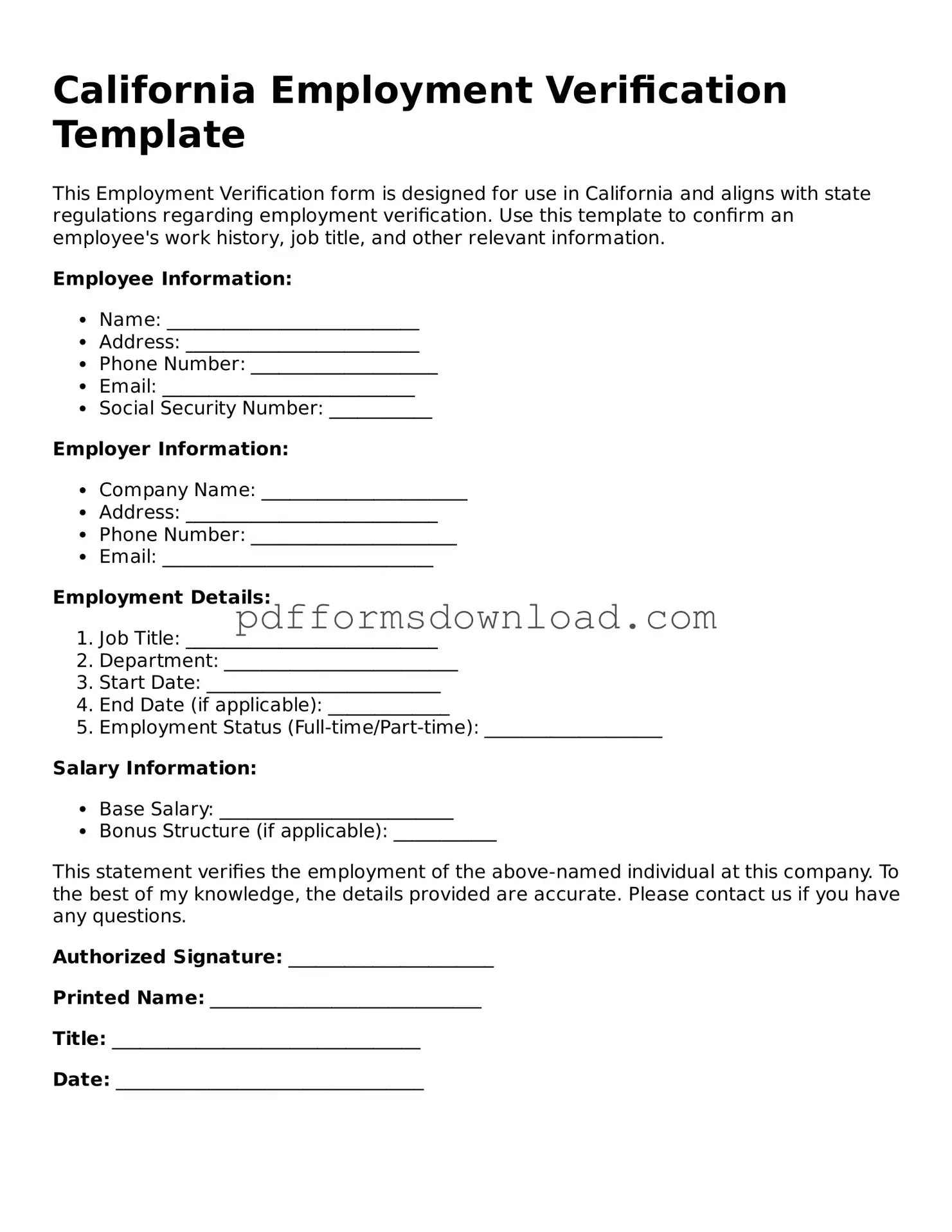What is the California Employment Verification form?
The California Employment Verification form is a document used by employers to verify an employee's job status, salary, and duration of employment. This form is often requested by lenders, landlords, or other entities that need to confirm an individual's employment details.
Who needs to fill out the Employment Verification form?
The form is typically filled out by the employer or the HR department. Employees may need to request this form to provide proof of employment when applying for loans, renting apartments, or other situations where verification is necessary.
What information is required on the form?
The form usually requires basic information such as the employee's name, job title, dates of employment, and salary information. Employers may also include additional details, such as employment status (full-time or part-time) and the nature of the employee's work.
How can I obtain the Employment Verification form?
Is there a fee for obtaining the Employment Verification form?
Generally, there is no fee for requesting an Employment Verification form from your employer. However, some companies may have policies regarding the number of requests or the method of delivery that could incur a fee, especially if you require expedited processing.
How long does it take to get the Employment Verification form completed?
The time it takes to complete the form can vary. Typically, employers aim to process requests within a few business days. If there are delays, it may be due to the volume of requests or the need for additional information.
Can I request my own Employment Verification form?
Yes, you can request your own Employment Verification form. It's a common practice for employees to ask for this document, especially when they are in the process of applying for loans or housing. Just reach out to your HR department or supervisor to make the request.
What if my employer refuses to provide the Employment Verification form?
If your employer refuses to provide the form, it’s important to understand the reasons behind their decision. Some employers may have policies in place regarding the release of employment information. If you believe you have a right to this information, consider discussing it further with HR or seeking legal advice if necessary.
Are there any privacy concerns with the Employment Verification form?
Yes, privacy is an important consideration. Employers must ensure that they are only sharing necessary information and that they comply with privacy laws. Employees should also be aware of what information is being shared and who it is being shared with, especially when it comes to sensitive data like salary information.
